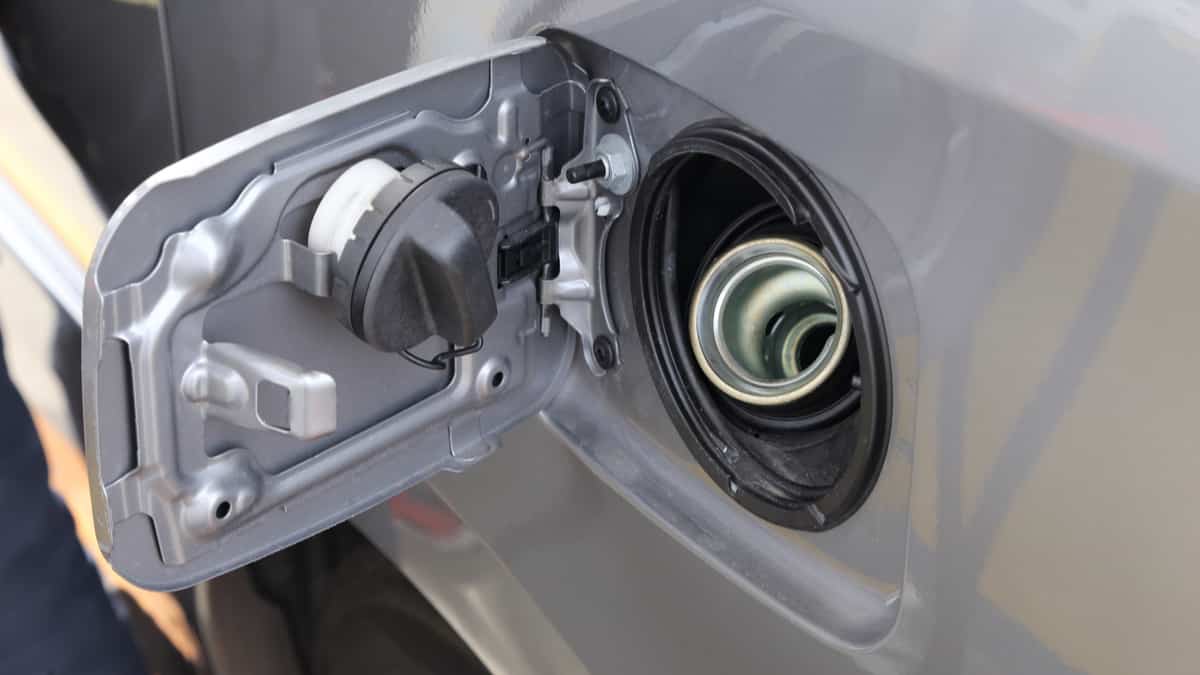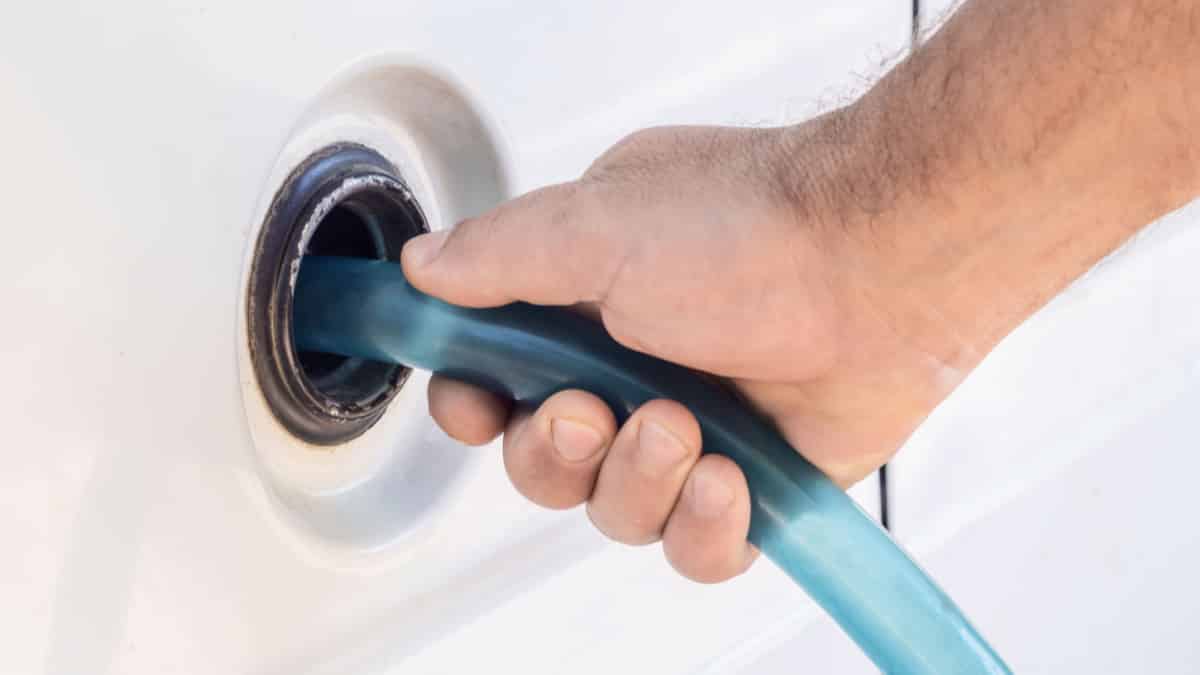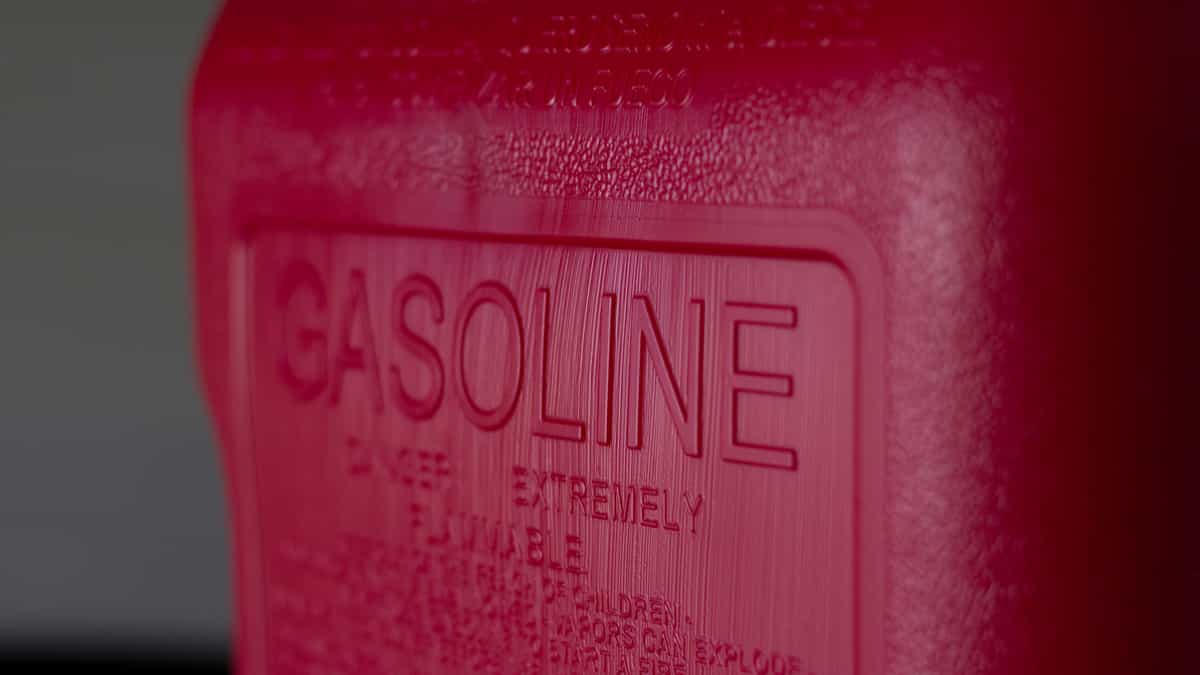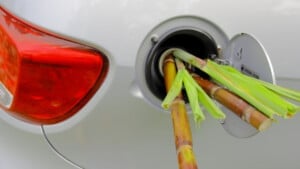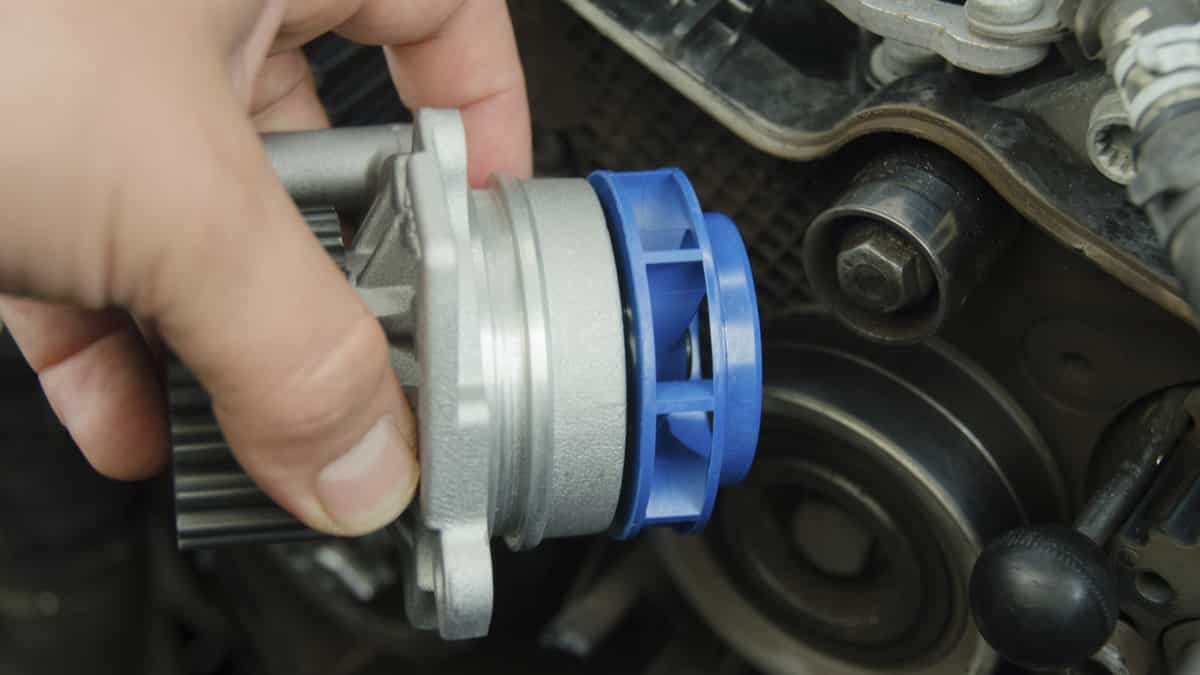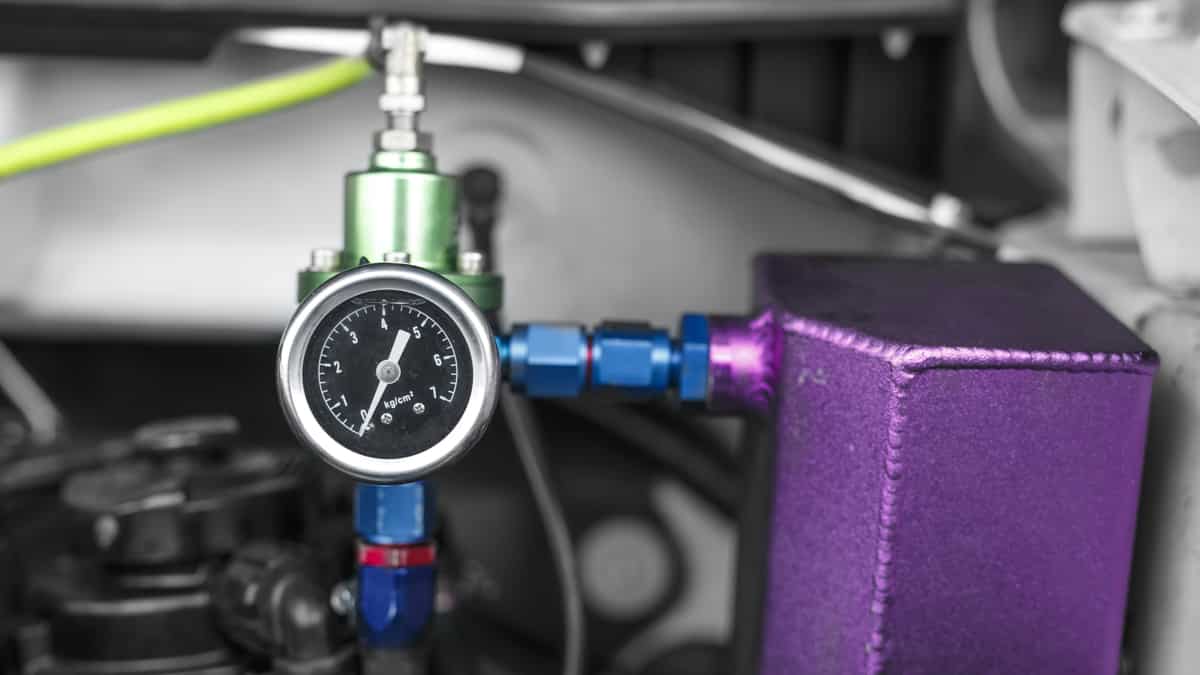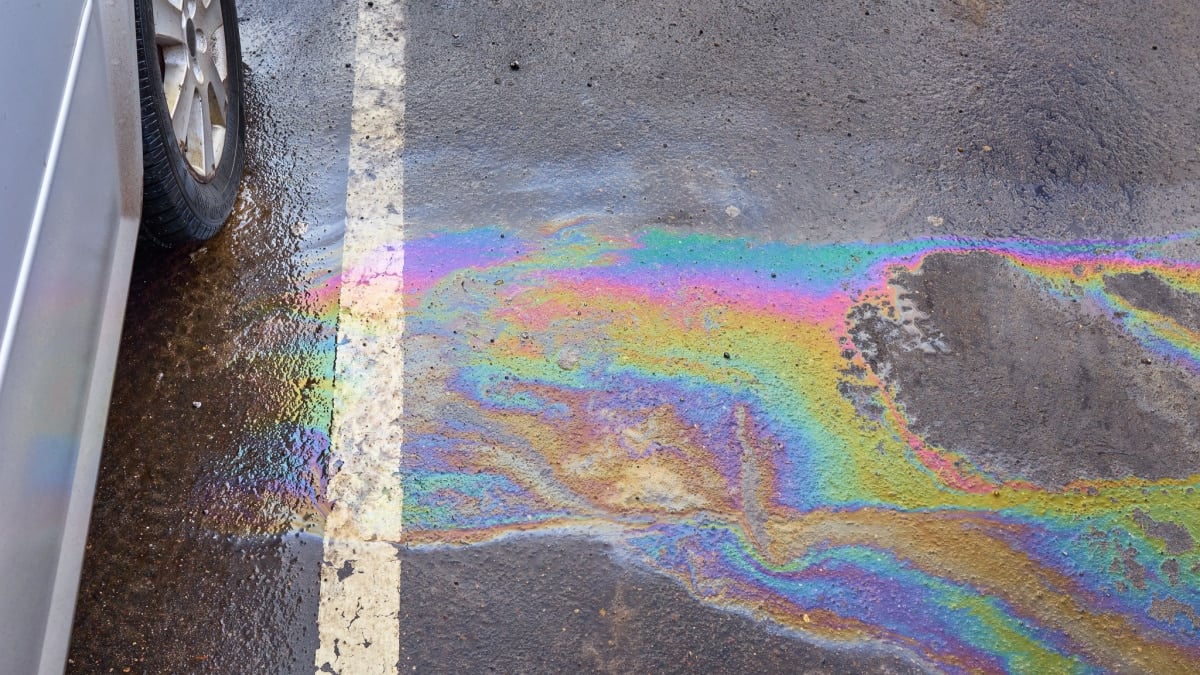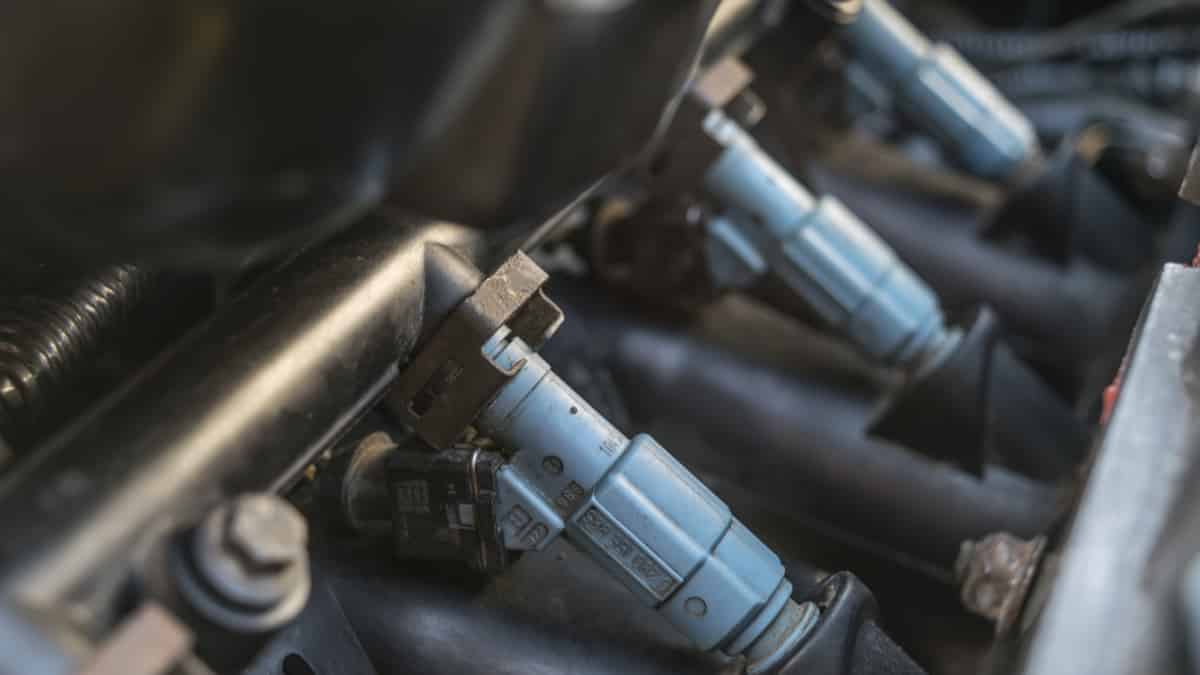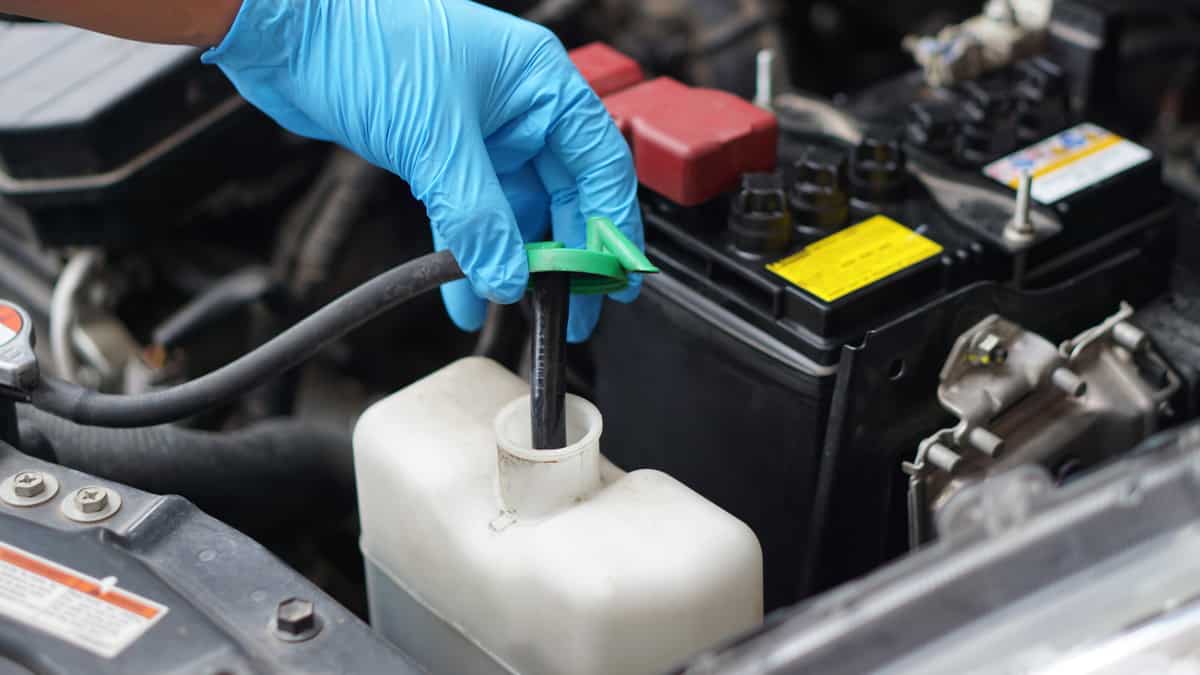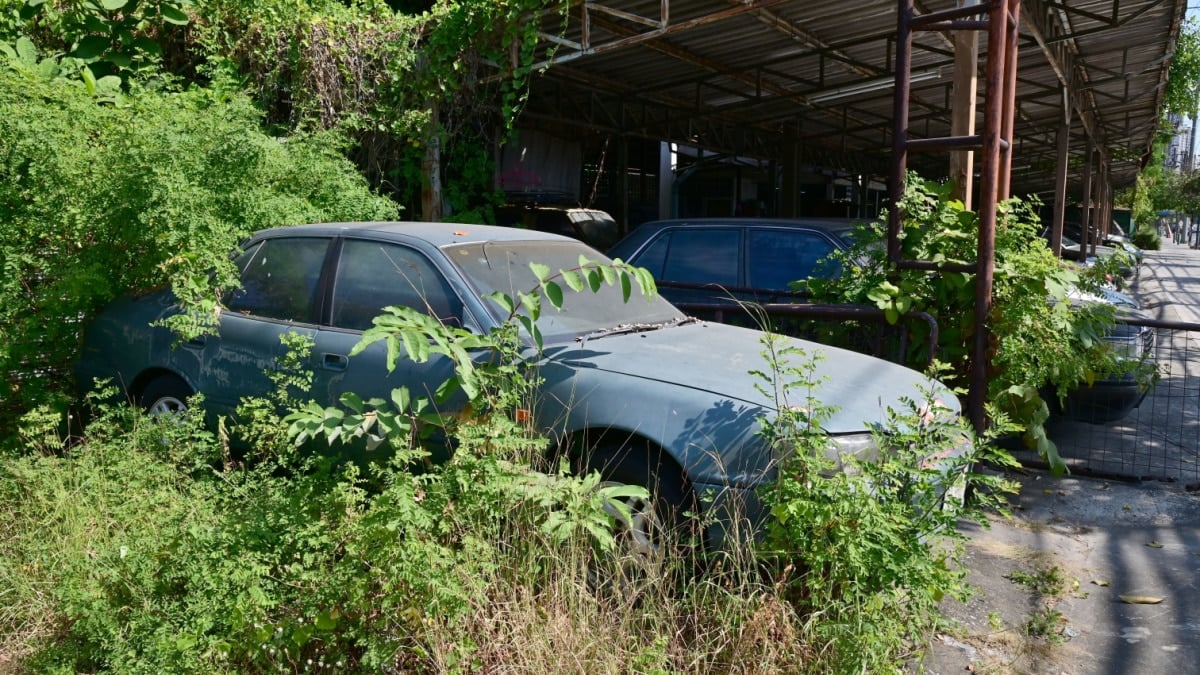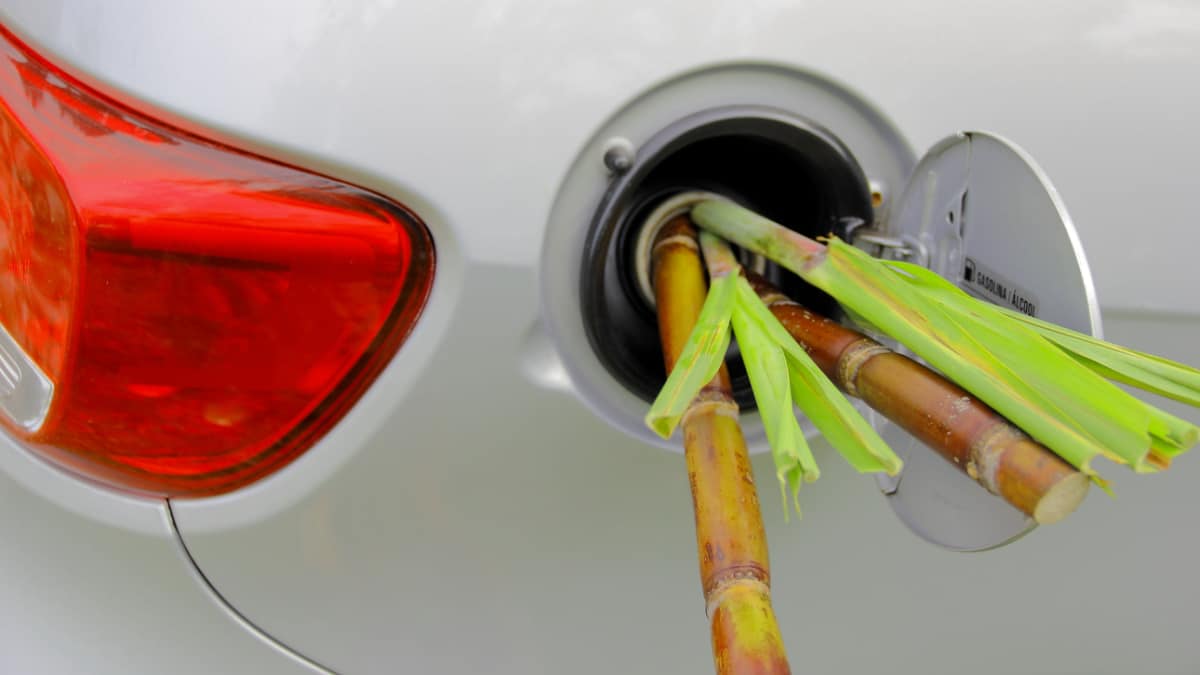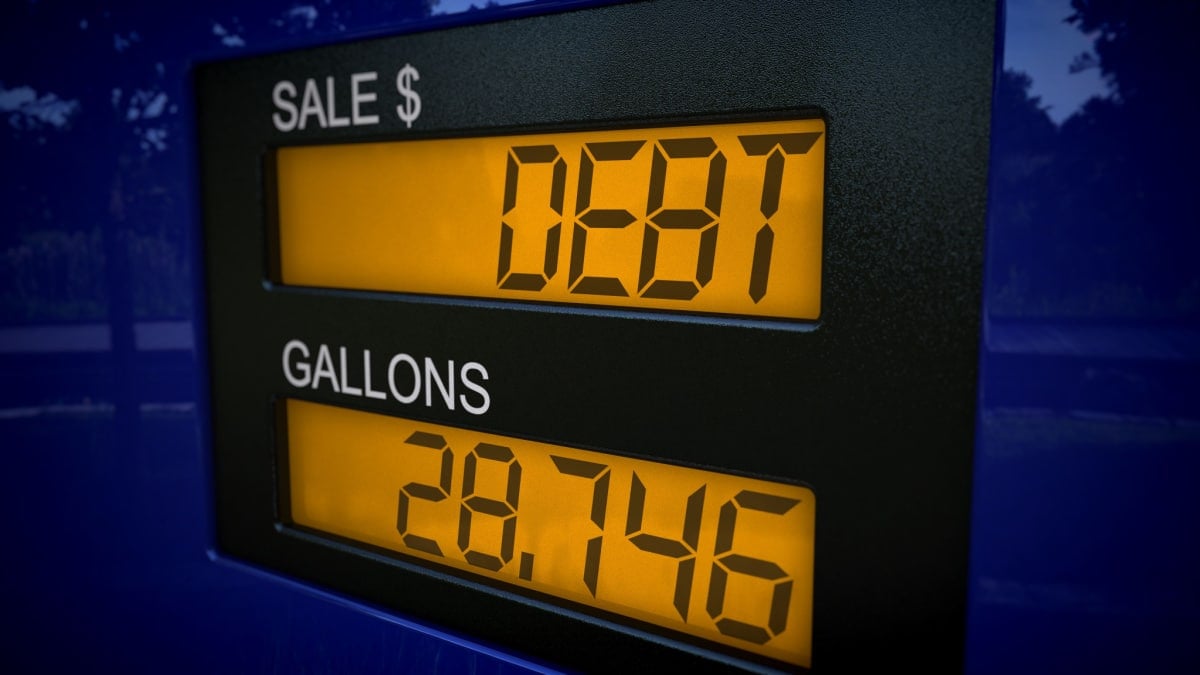Do you suspect you have water in your gas tank and want to get it out? Water in the gas tank is very common in older cars with rusty tanks and poor tank ventilation. However, these problems also occur in newer vehicles.
As you probably already know, cars will unfortunately not run on water, and if you have water in your gas tank, your car will definitely not like it.
But how do you know if there is water in the gas tank, and how do you remove it if there is? I will talk about all of that in this article. Let’s get started!
What Are The Symptoms Of Water in Gas tank?
The main symptoms of water in the gas tank include:
- Rough acceleration
- Misfires
- Rough idle
- Check engine light
- Steam from the exhaust
- Slow acceleration
- Hard starting condition
- The engine does not start at all
- The problems appear after the car has been standing for a while
Here is a more detailed list of the signs of water in the gas tank to look for:
1. Rough acceleration

The most common symptom of water in the gas tank is probably rough acceleration. Because the engine treats water in the gas tank as fuel, the air-fuel mixture in the combustion chamber will be very strange.
You can often feel this by very rough acceleration.
2. Misfires
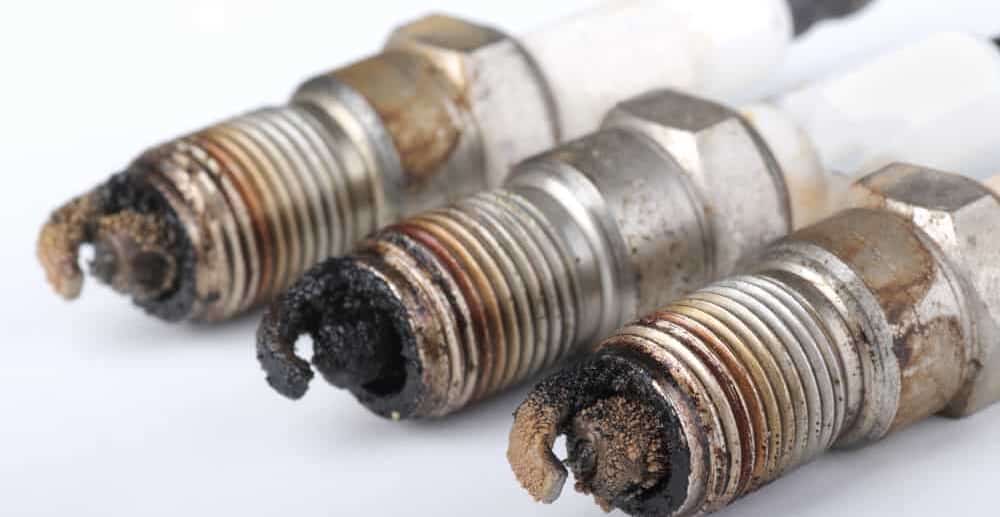
Due to the issues I talked about earlier about what will happen when the water enters the combustion chamber, you will probably also notice misfires when the water goes into the combustion chamber of the cylinder.
Misfires and rough acceleration can be two pretty similar symptoms, as misfires can cause rough acceleration, but you can also notice misfires on idle.
3. Rough idle
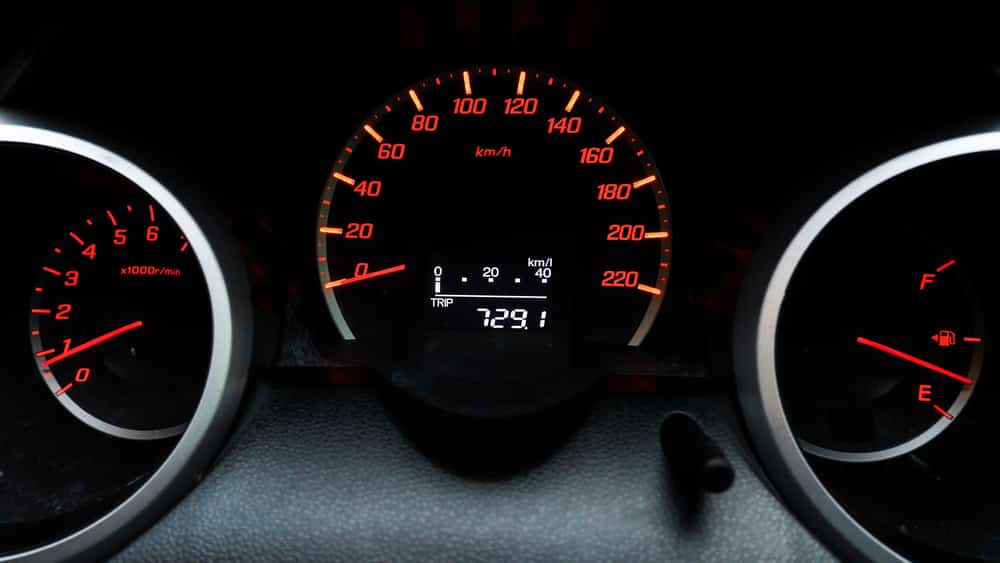
Rough idle is also a common symptom because of the faulty air-fuel mixture and the misfires. The car engine is susceptible to minor mistakes while at idle, and it’s at idle that you will notice the most symptoms of water in the gas tank.
4. Check engine light
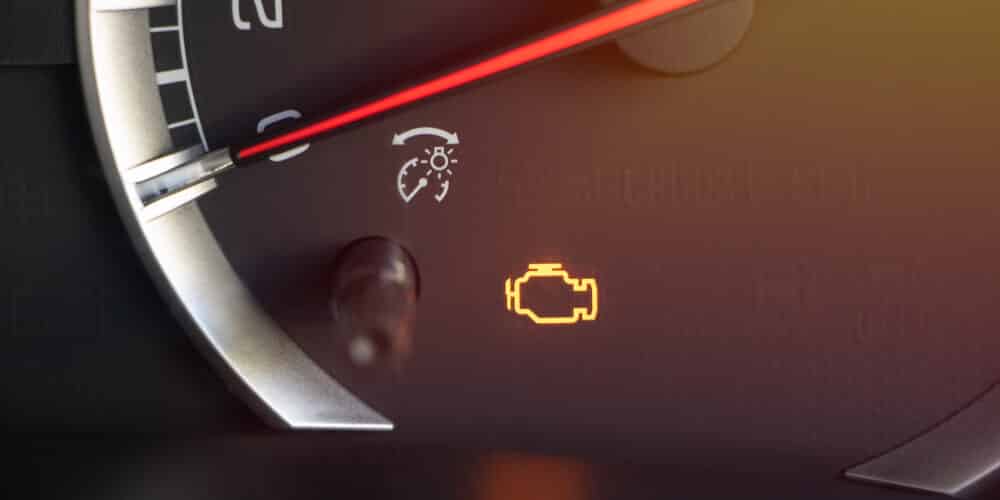
Modern cars have full-time monitoring of all the car sensors of the engine. If one sensor is getting faulty values, it will send the information to the engine control unit, which will store a trouble code in the memory and sometimes it will light up the engine light if the problem is serious.
If your check engine is lit up on your dashboard, it is definitely time to check the trouble codes with an OBD2 scanner.
5. Steam from the exhaust
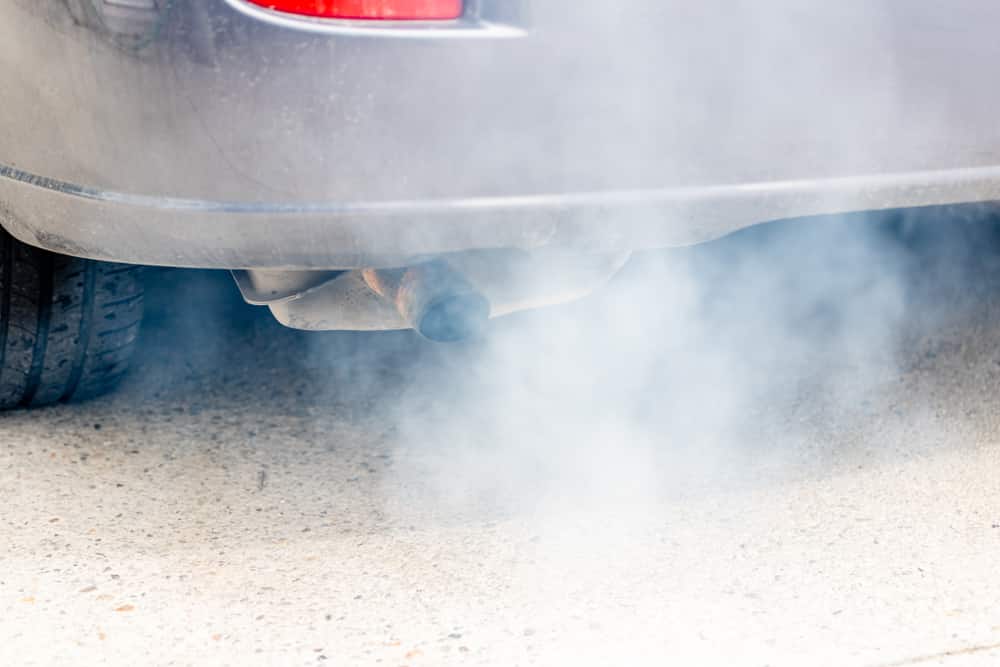
When you have water in the combustion chamber or the exhaust pipe, it will evaporate, causing steam. We all know what happens if you cook water over 100°C – it will evaporate to steam.
So if you notice there is a lot more steam than usual coming from the exhaust pipe, it could be water in the gas tank at fault.
6. Slow acceleration
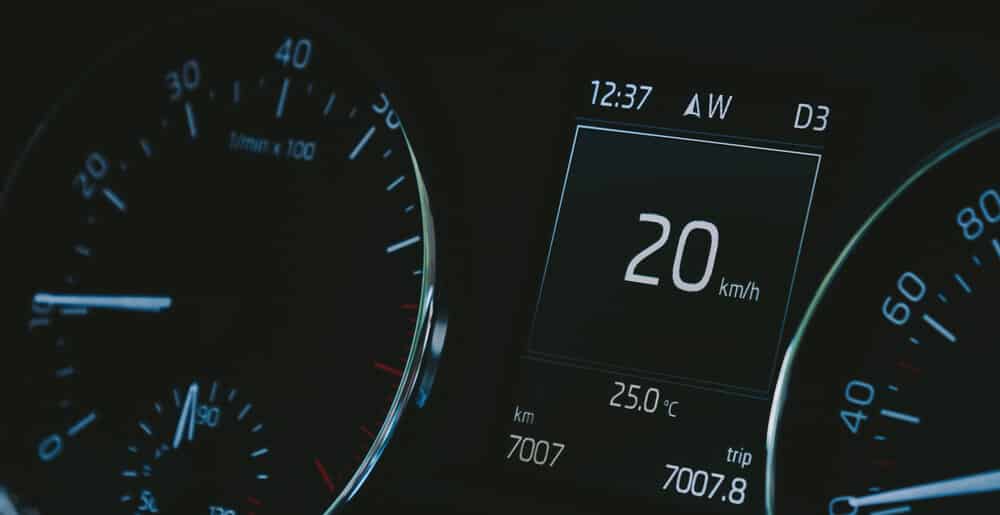
All the sensors in the car make sure that the air-fuel mixture is at a perfect mix all the time.
If there’s water going through the engine, the sensors will get a faulty reading and cause the engine to run too rich or too lean. This can cause the engine’s power to get reduced, and you may see symptoms like slow acceleration.
7. Hard starting condition
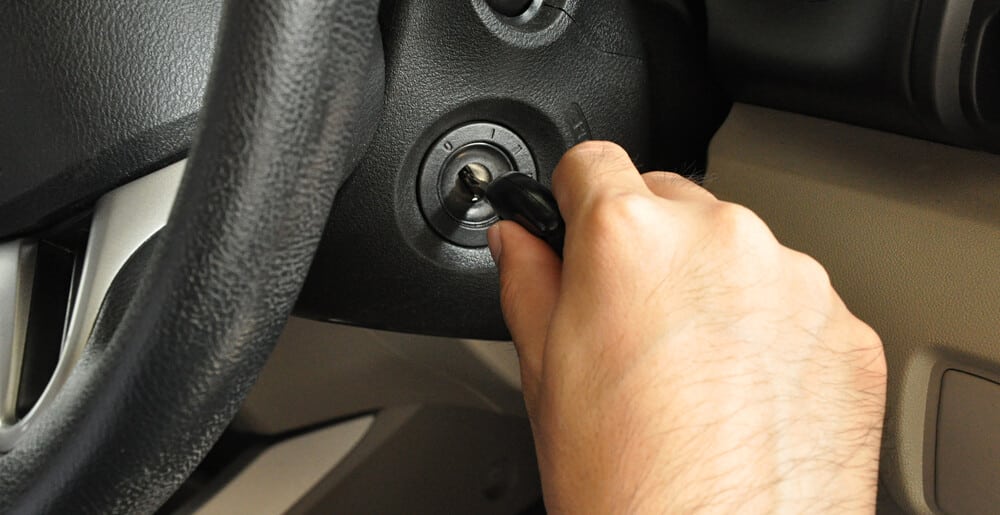
The start-up moment for any car engine is very critical. The fuel mixture has to be close to perfect, or the spark plugs will not have enough fuel to ignite the fuel, or they will be drowned and unable to generate ignition at all.
If you have water in the gas tank, it will wreak havoc on this delicate balance, and you may have a hard time starting yours. If you notice long cranking times, water in the gas tank should be on your list of things to check.
8. The engine does not start at all

You can have so much water in the fuel that the engine will not achieve ignition at all. There is also a possibility that your engine is hydro-locked if it won’t even crank. Water can’t get compressed like air, and when the pistons are trying to compress the air in the cylinder, they will instead be attempting to compress water, which is impossible.
This will cause the engine to lock up entirely, and may even damage the engine’s internals like the crankshaft rods. This is not very common, and there has to be a lot of water in the chamber to make this happen.
If you think this is the case, remove one spark plug to make sure it’s possible to turn the crankshaft after that.
9. The problems appear after the car has been standing for a while
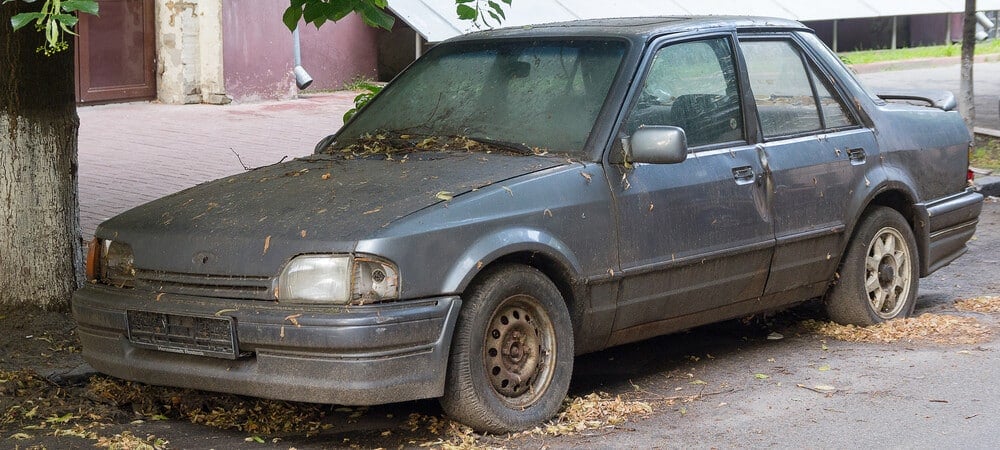
Fuel floats on top of the water and the water will stay at the bottom of the fuel tank when the vehicle has been standing for some time. When the fuel pump is pumping, the fuel and water are mixed. If the vehicle has been standing for a while, the water will be in the bottom of the tank.
Most fuel pumps suck the fuel from the bottom of the tank. Therefore, if your car has been sitting for a while, the fuel pump will pump only water to the engine.
How to get the water out of the fuel tank
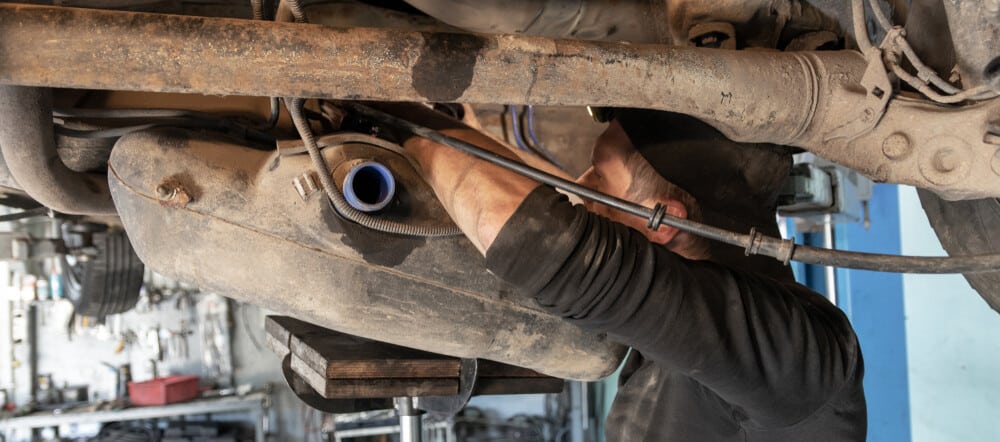
Now that you know the symptoms and causes, and you are sure that you have water in your gas tank, it’s time to learn how you can get rid of it.
There are a few different solutions for this. Here are some tips, based on how much water you have in the fuel tank.
1. Empty the tank and replace the fuel filter & refill
The best way to remove water from the gas tank is to empty the tank with a vacuum machine, replace the fuel filter, and refill it.
You need a vacuum machine to suck out all the water from the tank, so this job is better to leave to a mechanic workshop with these machines to do the work for you.
You can also pump it out with the inbuilt fuel pump, but remember that the fuel pump is often fitted a few millimeters up from the bottom of the tank. There may be water left on the bottom.
Remember to replace the fuel filter after doing this.
2. Fill with a bit of methanol or special fuel additives
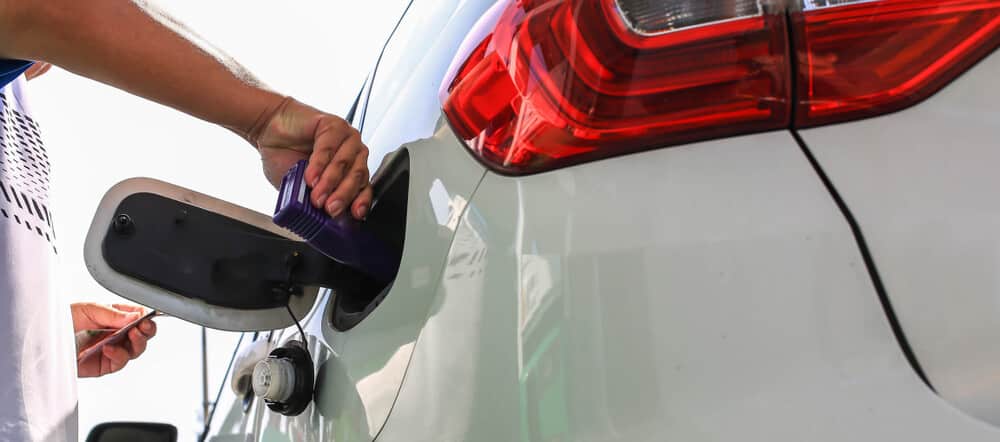
If you think that you have a little water in the fuel tank, you can try to get it out either with methanol or using a special fuel additive for this purpose.
Remember this will not remove a large amount of water from the fuel tank; it only works if you have a small amount.
Read the instructions carefully to ensure that you are not damaging the engine or other parts. To try it with methanol, be very careful and only use small doses of methanol.
Categories: General, Troubleshooting
